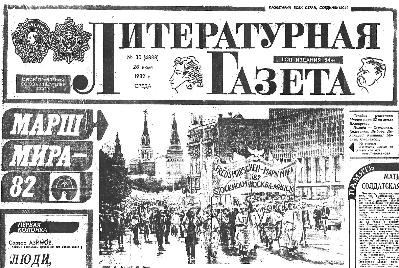Chapter 1: The Anti-Imperialist League 1898-1902
Pages 3 - 4
Chapter 2: The People's Council 1917-1919
Pages 5 - 6 - 7
Chapter 3: The American League Against War and Fascism and the Emergency Peace Campaign 1933-1939
Pages 8 - 9 - 10
Chapter 4: The Progressive Citizens of America 1946-1948
Pages 11-12
Chapter 5: The "Mobes" against the Vietnam War 1966-1970
Pages 13-14
Chapter 6: The Nuclear Freeze Movement and People-to-People Diplomacy 1980-1990
Pages 15-16-17-18
Chapter 7: Global Movement for a Culture of Peace 2000-
Pages 19-20-21
Chapter 8: The Root Causes of War
Pages 22-23-24-25-26-27
Chapter 9: The Future of the Peace Movement
Pages 28-29-30-31
Acknowledgements
Page 37
(continued from previous page)
The growth of the Nuclear Freeze Movement in the U.S. was matched by a growth in peace movements in the rest of the world. The massive peace demonstrations of the United States in 1982, 1983, and 1985 were surpassed in size by demonstrations in Western Europe and the Soviet Union. European marches at Easter time became an annual tradition involving millions of participants, especially trade unionists. Soviet peace rallies in 1982 involved a reported 40 million people, also organized largely around trade union participation. Americans, for the most part, were only dimly aware of them however, because of the tight controls on our foreign news coverage. The Easter marches of 1985 in Europe were not reported in the New York Times. And the massive Soviet rallies of 1982 and 1983 were not reported until finally they marched many of the one million participants in a rally past the windows of the U.S. embassy in Moscow after which they could no longer be ignored (New York Times, October 2, 1983.

|
| Figure 7. A Soviet newspaper headlines Scandinavian peace marchers as their route takes them by Red Square in Moscow - 1982 |
Pressure for a nuclear freeze also came from the United Nations where the U.S. and NATO found themselves increasingly isolated. At the Second Special Session on Disarmament in 1982, the two resolutions for a nuclear freeze passed 119-17 and 122-16. The socialist and developing countries voted solidly for a freeze, while the U.S. and NATO were those who voted against it. By 1983, the United States cast the only opposition vote to the resolution to prevent an arms race in outer space (147 nations voted for the resolution).
In the second half of the 1980's, a number of related peace initiatives made major contributions to ending the Cold War, including: the International Physicians for the Prevention of Nuclear War (IPPNW); the people-to-people exchanges with the Soviet Union by groups such as Promoting Enduring Peace; and the Peoples Peace Appeal. IPNNW had been founded on the basis of a friendship between a U.S. and a Soviet heart specialist, Dr. Bernard Lown and Dr Yevgeny Chazov, which occurred when Dr. Lown took advantage of scientific exchange programs to work in the Soviet Union in the 1970's. Chazov became the private cardiologist for President Gorbachev and was able to carry the IPPNW message directly to the top. Dr. Lown and others, including Dr. Helen Caldicott, made a major effort to organize physicians throughout the world around the simple message: a nuclear war would be the greatest medical catastrophe of history, and physicians had a responsibility to prevent it. The IPPNW received the Nobel Peace Prize in 1985, which helped them to get widespread publicity and to convince many people of their cause. In his book "Perestroika," written while he was still at the head of the Soviet Union, Mikhail Gorbachev gives special credit to IPPNW for helping the Soviets decide to press for nuclear disarmament despite what seemed to be unfair terms imposed by the West: "after their congress in Moscow, I met all the leaders of the movement. It is impossible to ignore what these people are saying...prompted by accurate knowledge and a passionate desire to warn humanity about the danger looming over it."
(continued on next page)
 |
 |
 |